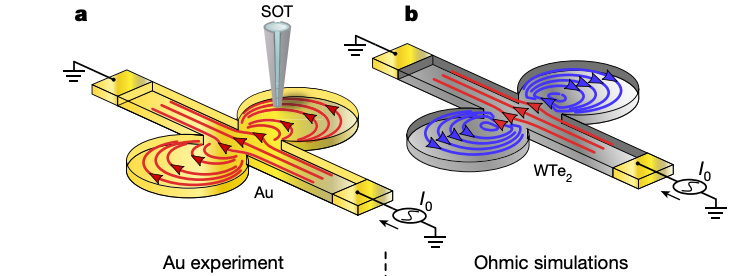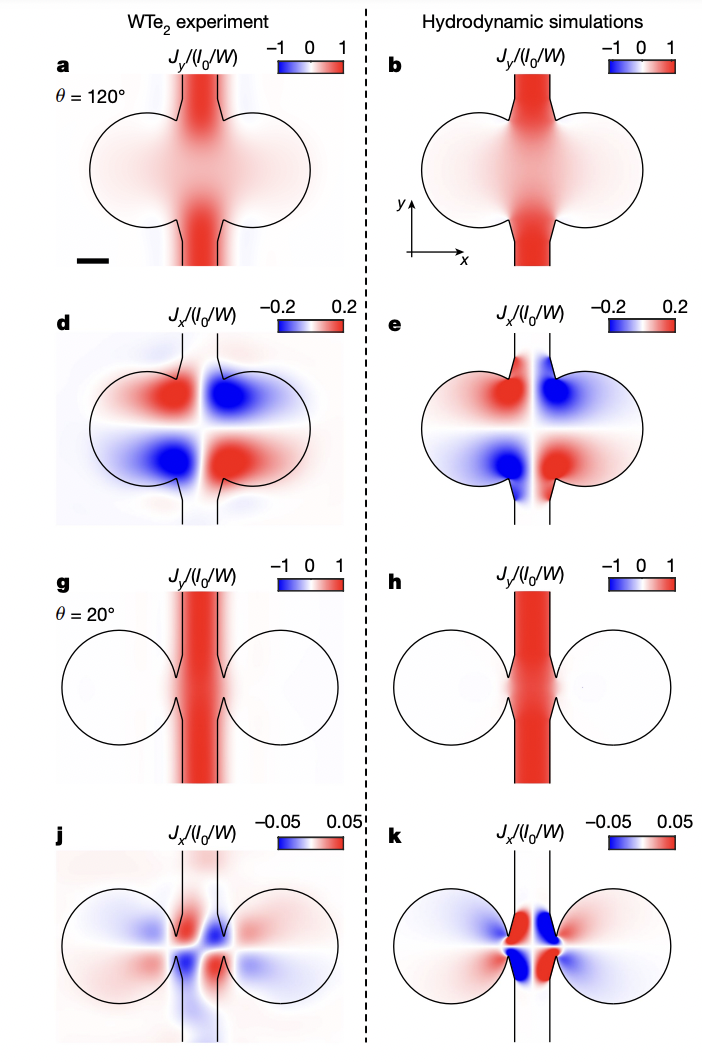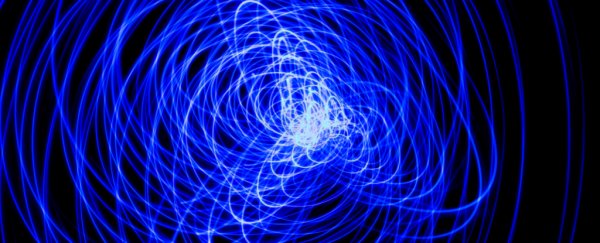For the first time, physicists have witnessed something incredibly exciting: electrons forming whirlpools just like a fluid.
This behavior is one that scientists have long predicted, but never observed before. And it could be the key to developing more efficient and faster next-generation electronics.
"Electron vortices are expected in theory, but there's been no direct proof, and seeing is believing," says one of the researchers behind the new study, physicist Leonid Levitov from MIT.
"Now we've seen it, and it's a clear signature of being in this new regime, where electrons behave as a fluid, not as individual particles."
While electrons flowing in a vortex may not sound that groundbreaking, this a big deal because flowing like a fluid results in more energy being delivered to the end point, instead of being lost en route while electrons are jostled around by things such as impurities in the material or vibrations in atoms.
"We know when electrons go in a fluid state, [energy] dissipation drops, and that's of interest in trying to design low-power electronics," says Levitov. "This new observation is another step in that direction."
The work was a joint experiment between MIT, the Weizmann Institute for Science in Israel, and the University of Colorado at Denver.
Of course, we already know that electrons can bounce off each other and flow without resistance in superconductors, but this is the result of the formation of something known as 'Cooper pairs', and isn't a true example of electrons collectively flowing like a fluid.
Take water, for example. Water molecules are individual particles, but they travel as one according to the principles of fluid dynamics, carrying each other across a surface, making streams and whirlpools as they go.
An electric current should essentially be able to do the same, but any collective behavior of electrons is usually overridden by impurities and vibrations in normal metals and even semiconductors. These 'distractions' knock electrons around as it travels and stops them from exhibiting fluid-like behavior.
It's long been predicted that within special materials at near-zero temperatures, these interferences should disappear allowing the electrons to move like a fluid… but the problem was no one had actually been able to prove this was the case, until now.
There are two fundamental features of a fluid: linear flow, where separate particles all flow in parallel as one; and the formation of vortices and eddies.
The first was observed by Levitov and colleagues at the University of Manchester back in 2017 using graphene. In atom-thin sheets of carbon, Levitov and his team showed that an electrical current could flow through a pinch point like fluid, rather than like grains of sand.
But no one had seen the second feature. "The most striking and ubiquitous feature in the flow of regular fluids, the formation of vortices and turbulence, has not yet been observed in electron fluids despite numerous theoretical predictions," the researchers write.
To figure this out, the team took pure, single crystals of an ultra-clean material known as tungsten ditelluride (WTe2) and sliced off single-atom-thin flakes.
They then etched a pattern into a central channel with a circular chamber on either side, creating a 'maze' for an electrical current to run through. They etched the same pattern on flakes of gold, which doesn't have the same ultra-clean properties as the tungsten ditelluride and therefore acted as a control.
 (Aharon-Steinberg et al., Nature, 2022)
(Aharon-Steinberg et al., Nature, 2022)
Above: The diagram on the left shows how electrons flowed in the experiment in gold (Au) flakes. The image on the right shows a simulation of how they'd expect fluid-like electrons to behave.
After cooling the material to around -269 degrees Celsius (4.5 Kelvin or -451.57 Fahrenheit) they ran an electrical current through it and measured the flow at specific points throughout the material, to map how the electrons were flowing.
In the gold flakes, the electrons flowed through the maze without changing direction, even when the current had passed through each side chamber before coming back to the main current.
In contrast, within the tungsten ditelluride, the electrons flowed through the channel and then swirled into each side chamber creating whirlpools, before flowing back into the main channel – like you'd expect a fluid to do.
"We observed a change in the flow direction in the chambers, where the flow direction reversed the direction as compared to that in the central strip," says Levitov.
"That is a very striking thing, and it is the same physics as that in ordinary fluids, but happening with electrons on the nanoscale. That's a clear signature of electrons being in a fluid-like regime."
 (Aharon-Steinberg et al., Nature, 2022)
(Aharon-Steinberg et al., Nature, 2022)
Above: The column on the left shows how the electrons flowed through tungsten ditelluride (WTe2) compared to the hydrodynamic simulations in the left column.
Of course, this experiment was done at ultra-cold temperatures with a specialized material – it's not something that'll be happening in your home gadgets any time soon. There were also size constraints on the chambers and the middle channel.
But this is the "first direct visualization of swirling vortices in an electric current" as the press release explains. Not only is this confirmation that electrons can behave as a fluid, the advance could also help engineers to better understand how to harness this potential in their devices.
The research has been published in Nature.
